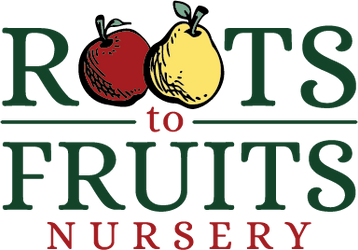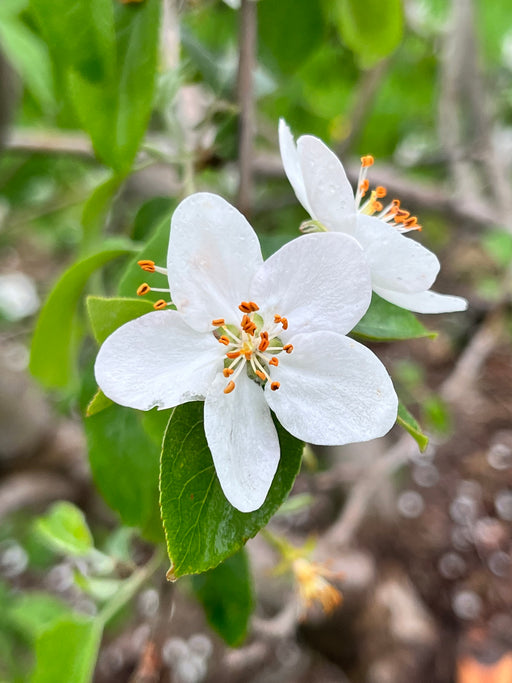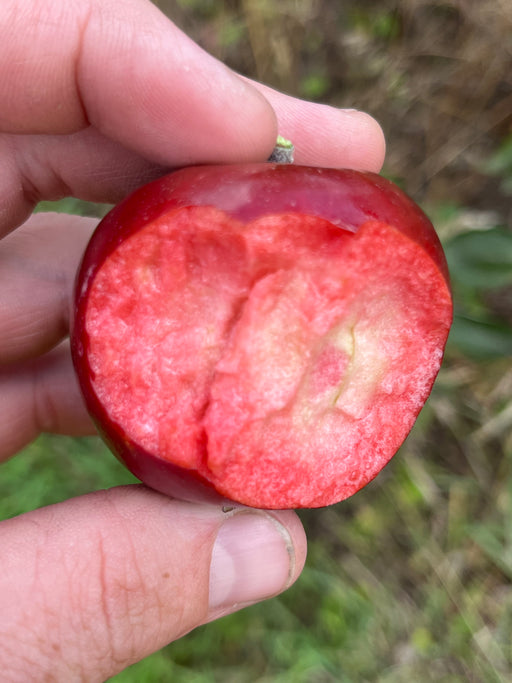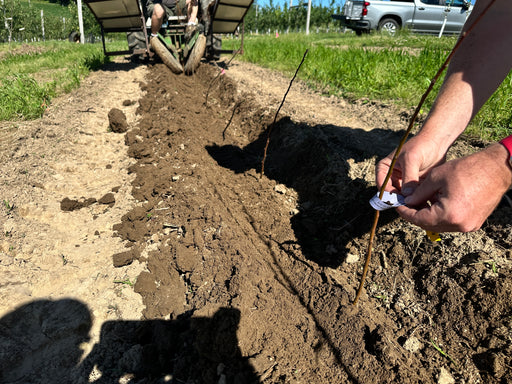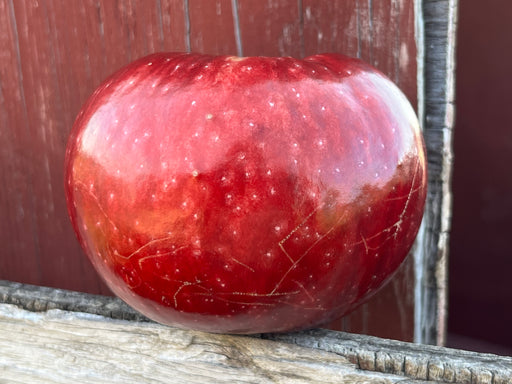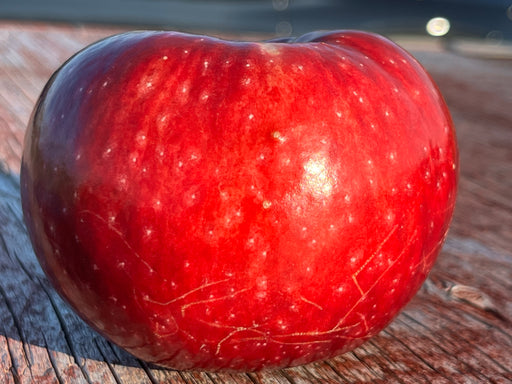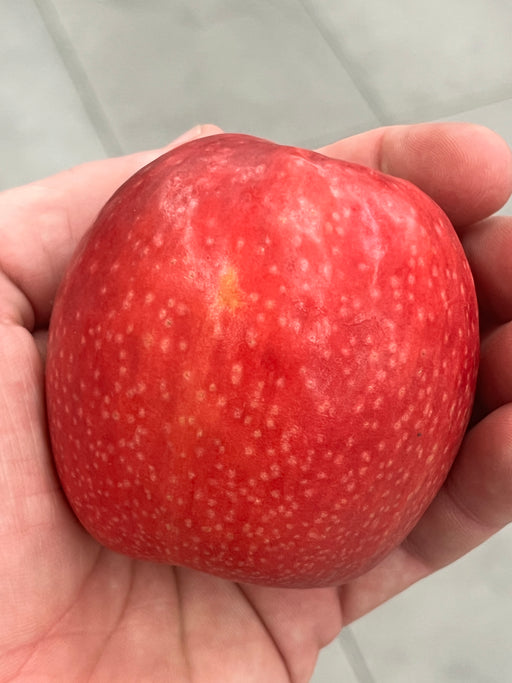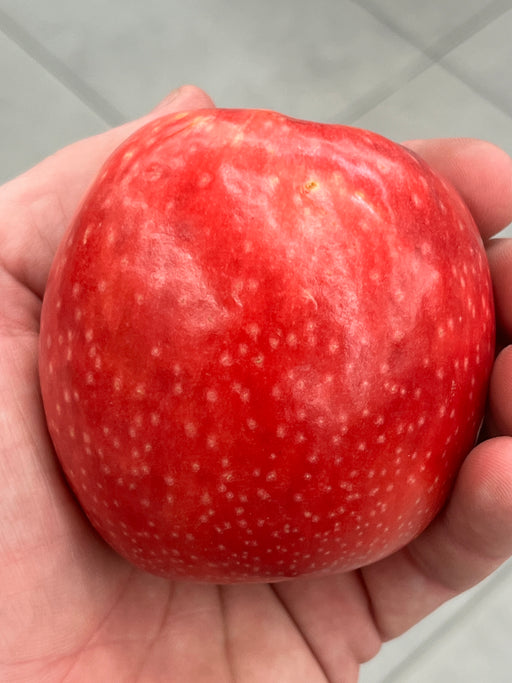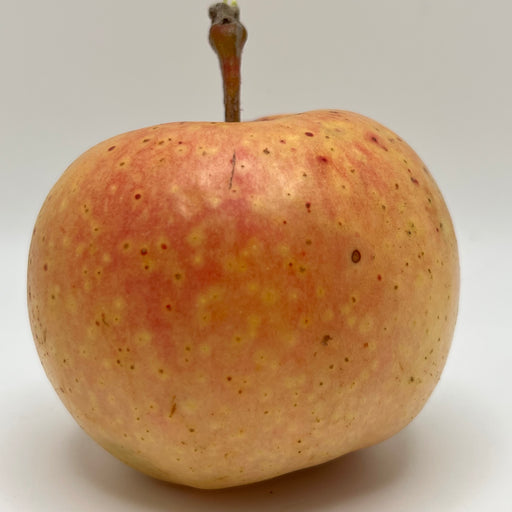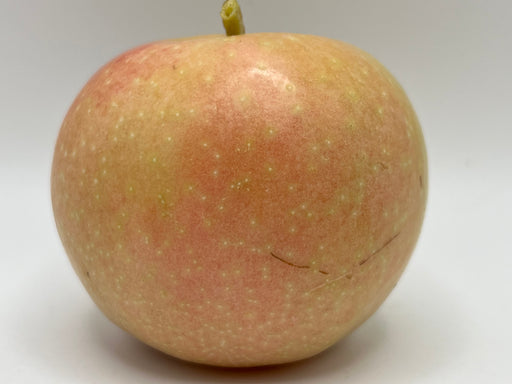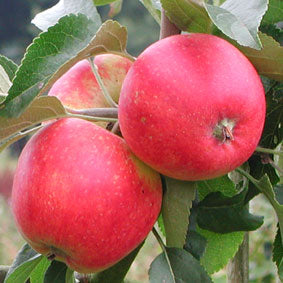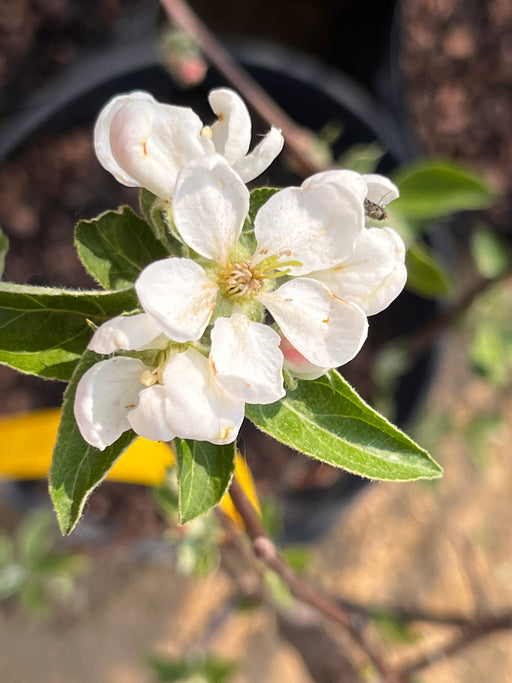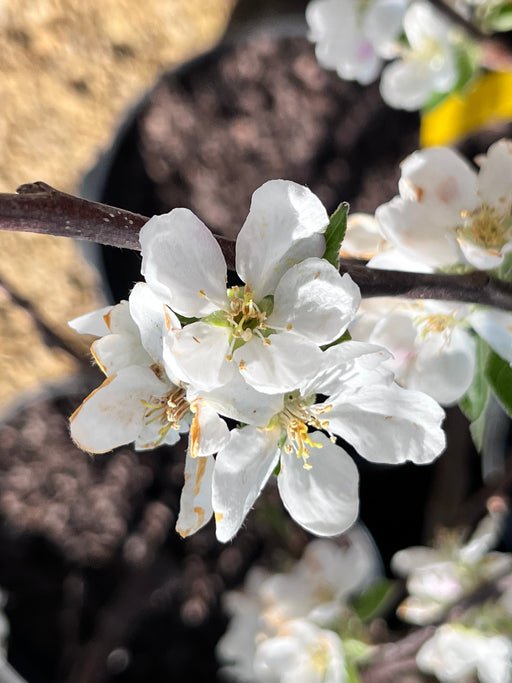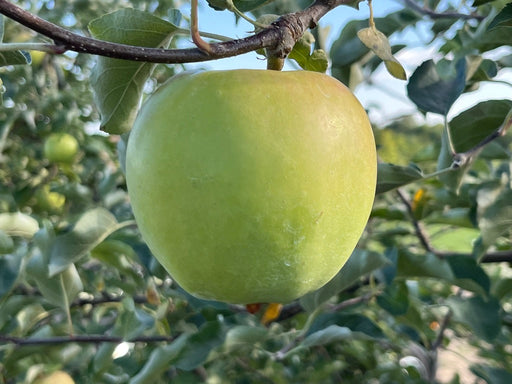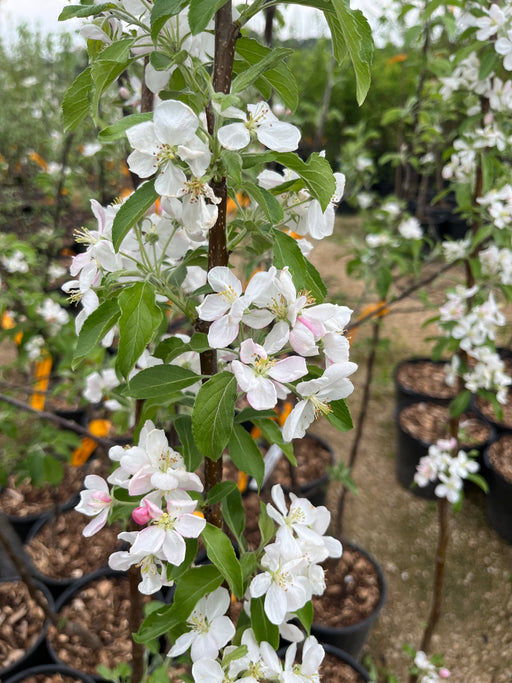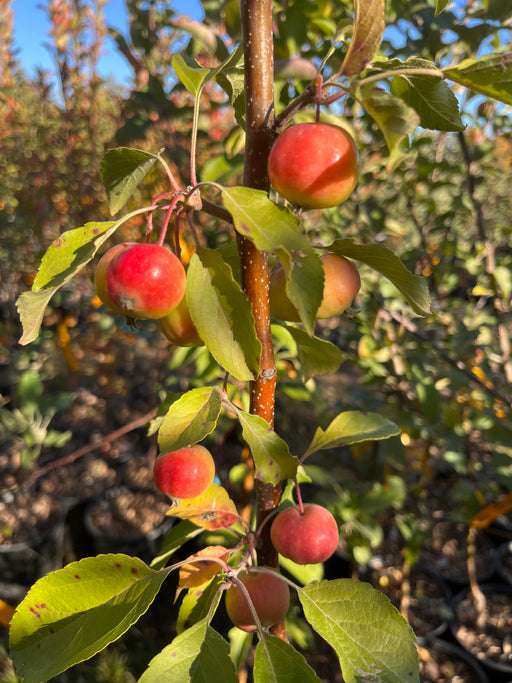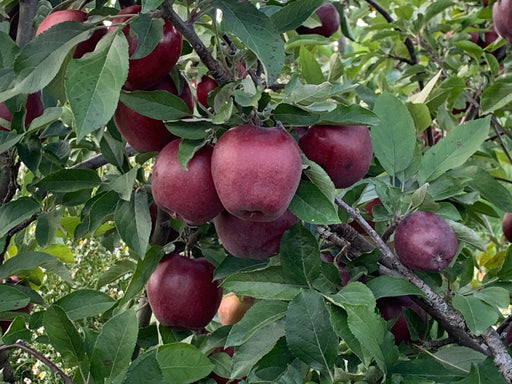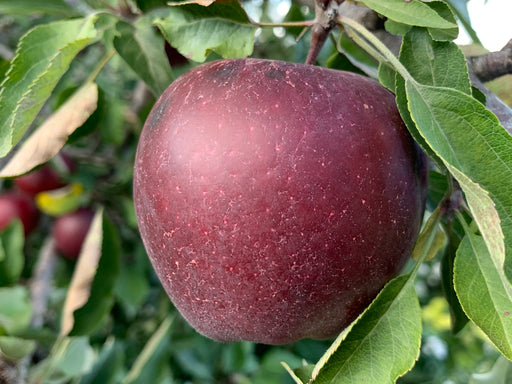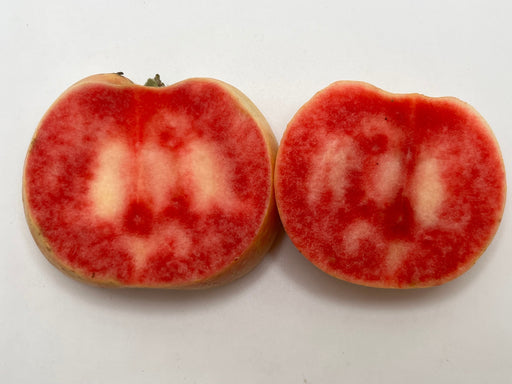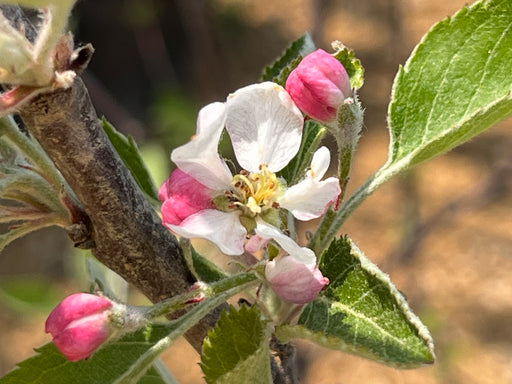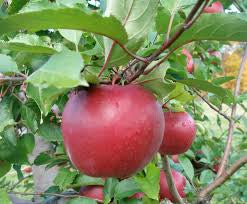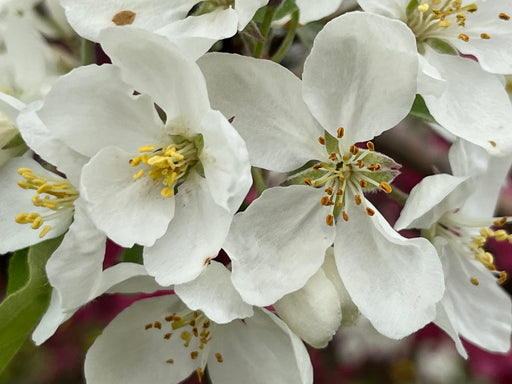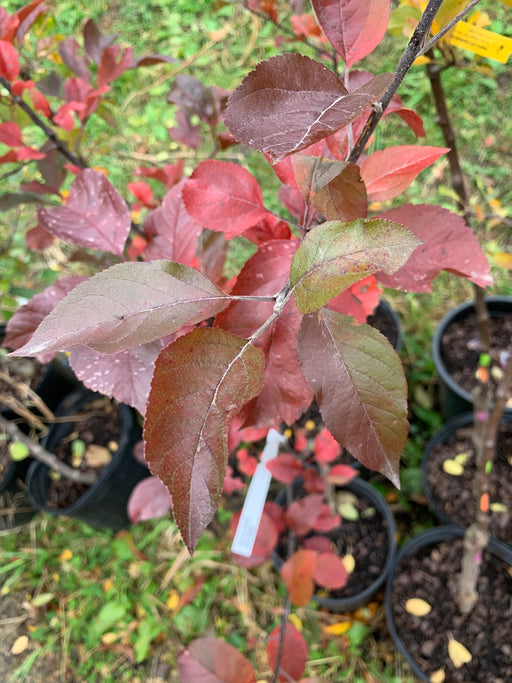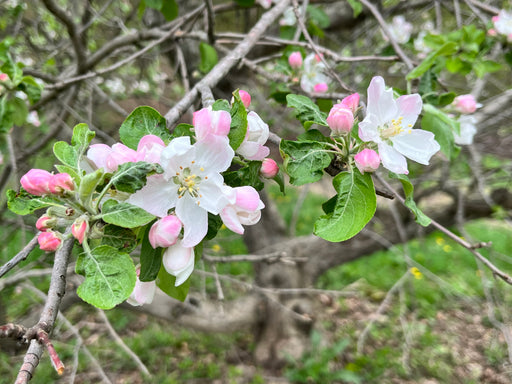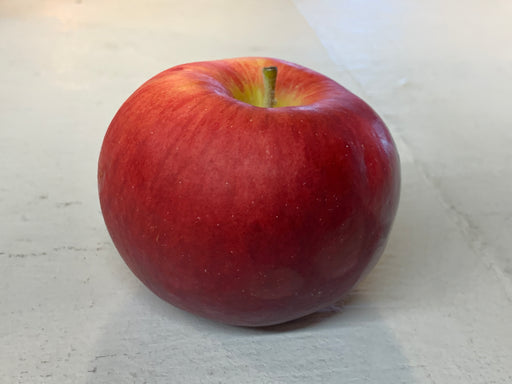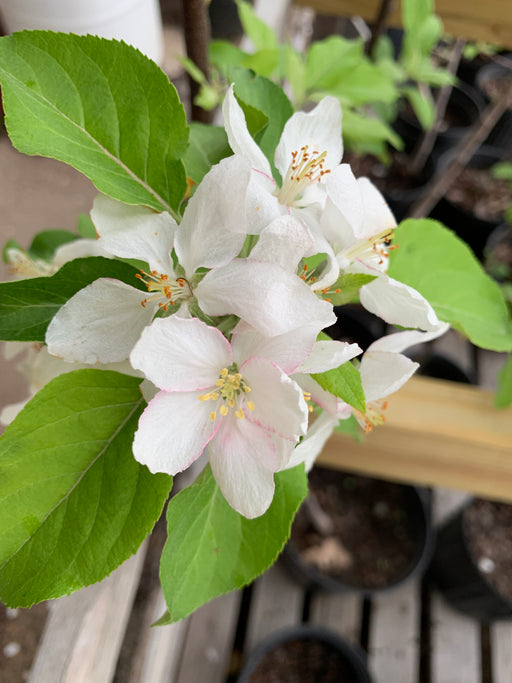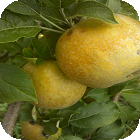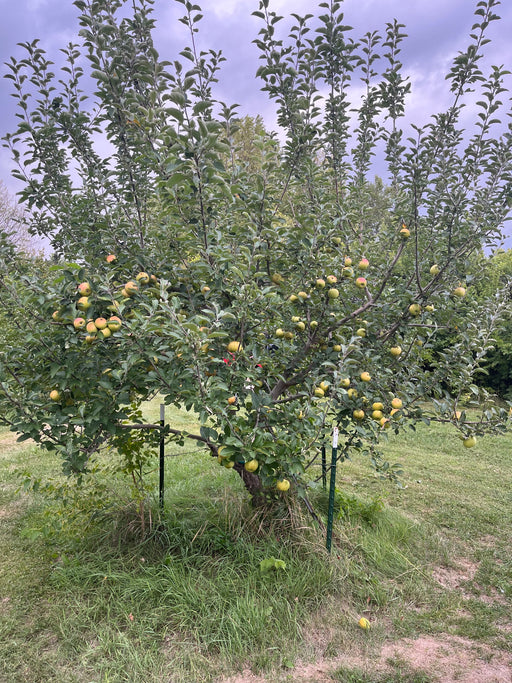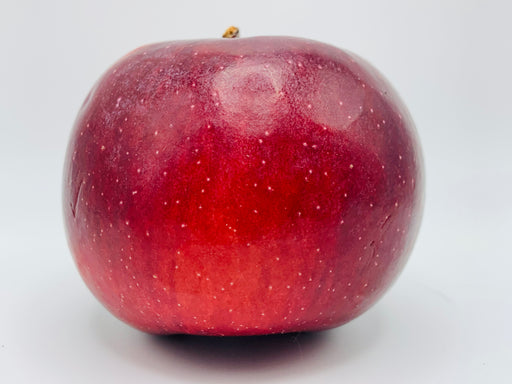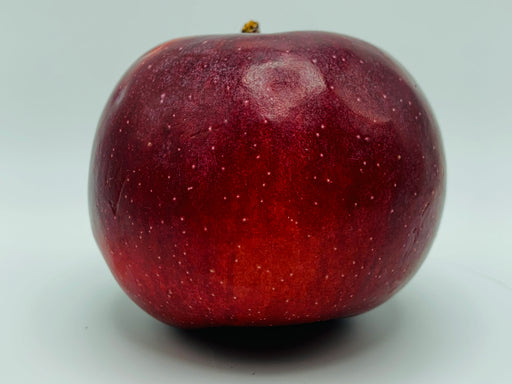Apple Trees
Our apple trees, like many fruit trees, are propagated by grafting. There are two parts to an apple tree. The scion is the fruiting part of the tree, which gives you the variety of the apple, and the rootstock, which influences the mature size and hardiness of the tree, and determines the time it takes for the tree to fruit. We sell Standard, Semi-Dwarf, Dwarf, and Mini-Dwarf trees that do not require a lot of space and yet, will bear large fruit.
A few key notes on successful planting methods:
- Trees must be planted in well-drained soil
- Six hours of sunlight; full sun preferred
- Stake all trees for the first two years
- Dwarfs must have permanent stakes
- Tree guards should be used
- Plant at least two different apple tree varieties for Cross-Pollination
- Plant disease-resistant trees for less maintenance; we are happy to help make any suggestions you might need
We categorize our apple trees into at least five sizes: Petite, Maiden, Field Ready, Hand Select, and Container depending on the size of the tree. The Petite tree is our smallest graded tree less than 2 years in age; Maiden trees are usually 2 years old and are branchless. These are also called whips and will bear in 2-3 years. A Field Ready tree is 2-3 years old and might have some lateral branching, be thicker above the graft, and will bear in 1-2 years. The Hand Select trees are only about 20% of trees we have and are 3 year old trees, 6-9’ tall and can be heavily branched. You can expect fruiting on a Hand Select tree in about a year.
Orleans Reinette Apple Tree
European, probably French given the name, baking apple. First mentioned by the Dutch pomologist (apple expert) Johann Knoop in 1776 though was almo...
View full detailsOtterson Apple Trees
The Otterson is a cross between the Fameuse x Niedzwetzkyana (the ancestor of almost all modern red fleshed apples). A very tart red fleshed crabap...
View full detailsPajam 2 Rootstock
Very similar to M.9 and its related families, the Pajam 2 Cepiland is a French rootstock know to be one of the strongest M9 grafts available today....
View full detailsPaula Red Apple Tree
Early. Crunchy. Juicy. The Paula Red is an adorable apple and rather plump in stature. Its calyx is short and often pairs with adjacent apples alon...
View full detailsPink Lady® Apple Trees
Bred at the Department of Agriculture in Western Australia in 1970 by researcher John Cripps. He crossed the red Australian apple Lady Williams wit...
View full detailsPink Pearl Apple Trees
Created in 1940 by Albert Etter after combing through seedlings from a 'Surprise' apple. He eventually settled on seedling #39- its properties were...
View full detailsPixie Crunch Apple Trees
Pixie Crunch, or Co-op 33, is a 1971 cultivar of the PRI Institute grown at Purdue University. Descended from the Golden Delicious and Red Rome app...
View full detailsPound Sweet Apple Trees
Originating in Connecticut in 1834, the apple was primarily used for baking in desserts but apparently is not the best in pies. It is green with a ...
View full detailsPrairie Magic Apple Tree
The Prairie Magic Apple is a wonderfully cold hardy variety hailing from Jeffries Nurseries in Neepawa, Mantioba. Wilford Drysdale crossed a Goodla...
View full detailsPrima Apple Tree
Originally planted in 1958 at the Illinois Experiment Station in Urbana (a sub-section of the PRI Breeding Program) and was named Coop 2. The 'Prim...
View full detailsPristine Apple Tree
Disease Resistant Apple named Co-op 32 out of the PRI Institute, specifically Rutgers University. Pale green to yellow apple- it ripens with Lodi a...
View full detailsPuget Spice Apple Tree
Introduced in 2012 from the University of Washington, the Puget Spice Apple is much smaller than its parents, the Prima and Alkemene. The apple is ...
View full detailsRed Delicious Apple Tree
The Red Delicious is among the most popular of varieties. This particular cultivar of Red Delicious originates from Peru, Iowa in 1872. Since then,...
View full detailsRed Flesh Apple Tree Collection
Want something colorful for your back yard orchard? These red-fleshed apples would help set your orchard apart or add a delightfully versatile coll...
View full detailsRed Gravenstein Apple Tree
The Red Gravenstein is a sport of the much older Gravenstein Apple. Originally planted in the 1670s, the Gravenstein apple was used as a cooking an...
View full detailsRed Rome Apple Tree
In 1817, Joel Gillet discovered a seedling tree from a nursery delivery and one of his children planted it near the Ohio River in Rome Township. A ...
View full detailsRed Spy Apple Tree
Discovered in New York in 1895 as a sport of the then common Northern Spy Apple. It is larger and redder than its parent yet retains much of the fl...
View full detailsRedfield Apple Apple Tree
First crossed at the NY Agricultural Experimental Station in 1938, the Redfield apple is a cross between the Wolf River and Niedwetzkyana apples. I...
View full detailsRedfree Apple Tree
Another apple created by the Purdue, Rutgers, and University of Illinois Agricultural Experimental Station in the 1980s, the Redfree apple was desi...
View full detailsReine de Pomme Apple Tree
Description Coming Soon! USDA Zone: Mature Height: M.111 ~18-21' tall; Semi-Dwarf Sun: Full Sun Bloom Group: Pollination: Required Ripen/Harvest Ti...
View full detailsRhode Island Greening Apple Tree
This American heirloom variety can trace its lineage back to Rhode Island in the mid 1650s and was discovered on the farm of a Mr. Green near Middl...
View full detailsRoseland Red Honeycrisp Apple Tree
Introduced in Minnesota in 1991, the Roseland Red Honey Crisp (RRHC) is a local favorite. The tree is one of the most vigorous and hardy of apple t...
View full detailsRoxbury Russet Apple Tree
First discovered in Roxbury- part of the Massachusetts Colony- in the mid 1630s; the Roxbury Russet is one of the oldest cultivars in the United St...
View full detailsRoyal Empire Apple Tree
The Royal Empire Apple (REA) is a sport of the popular Empire Apple. First discovered in 1992, this sport has grown to dominate the Empire market. ...
View full details